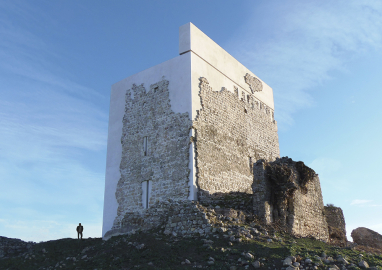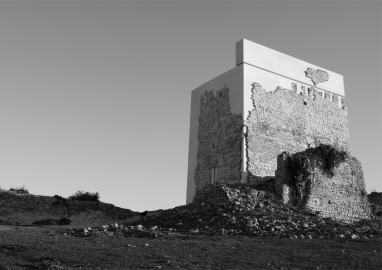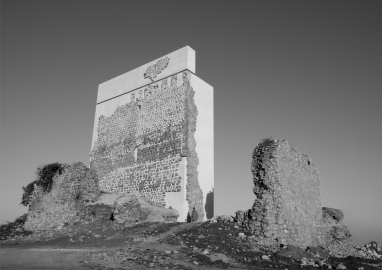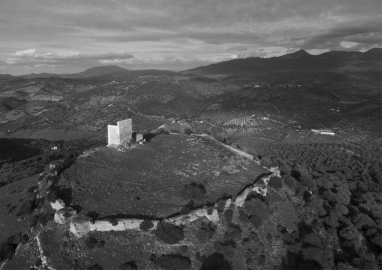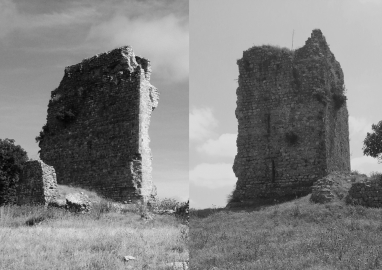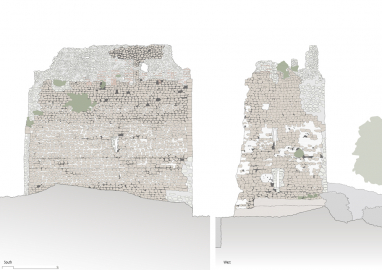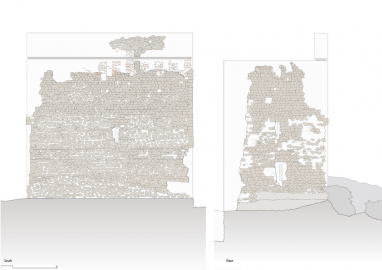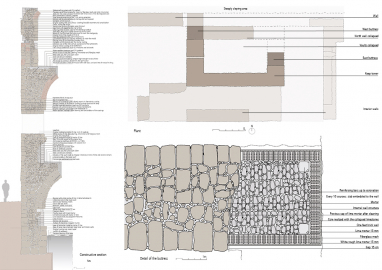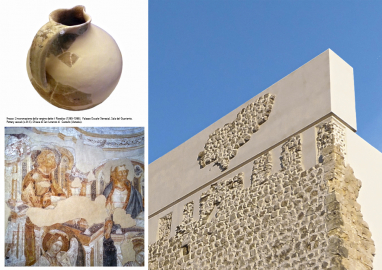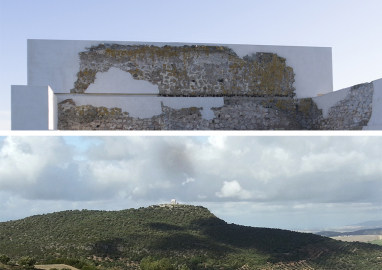Consolidation of the Castle of Matrera Keep Tower
Collapsed partially in 2013, with compatibility and authenticity criteria, the intervention looks to structurally consolidate the elements that were at risk, to differentiate the additions from the original structure, avoiding the mimetic reconstructions, and to recover the volume and tonality that the tower originally had as a landscape icon.
After the partial collapse that this medieval tower suffered, being a historical landmark for its strategic position in the latest “Nazari” border through the Valley of Guadalete, where it´s cut with Bética range, we project the consolidation of this landscape icon that lost part of its imposing volume, leaving at risk the stability of the rest popup, removing with it not only part from the architectural element, but also the landscape reference of a landmark linked with the iconography and culture of the region.
Being cultural models and emblems of our own cities and territories, the crisis has been that they succumb in the abandon for their own economic disinterest that carries their maintenance.
The essence of the project is not intended to be, therefore, an image of the future, but rather a reflection of its own past, its own origin. With brandian reference, this project aims to look at the potential restoration of unity without undertaking a historic monument false or cancel every trace of the passage in time. It tries to approach the work in recognition of the “monumentum” (memory) in its physical consistency and its dual polarity, aesthetic and historical, in order to transmit to the future.
The previous historical, constructive, functional, structural and pathological analyses, as well as the archaeological supervision have been important to define details of the project. New discoveries have appeared during the works that they have served to recover part of the interesting history of this monument of cultural interest.
For the buttresses that guarantee its stability and for the reinforcements/protections of the internal degraded cores that had lost their exterior stonework, the same limestone was re-used which had collapsed. The top was executed in order to consolidate the slender wall that remained after the collapse and that was traversing a serious risk of overturn. In its exterior face, the flesh was removed and in that the original white covering was retained in its interior face as well as an interesting fresco painting of a boat in ochre tonality. All the edges have been rethought from the details of geometric existing elements to mark its original volume.
In parallel with the practice in intervention of movable heritage, its historical value is enhanced, facing its original volume using a continuous coating (mortar of lime) similar to that which originally covered it, which clogs the gap and allows reading of the architecturally recessed unit. Likewise the upper casing defines its construction phases enhancing the original battlements shots that were hidden behind their stratigraphic superposition.

